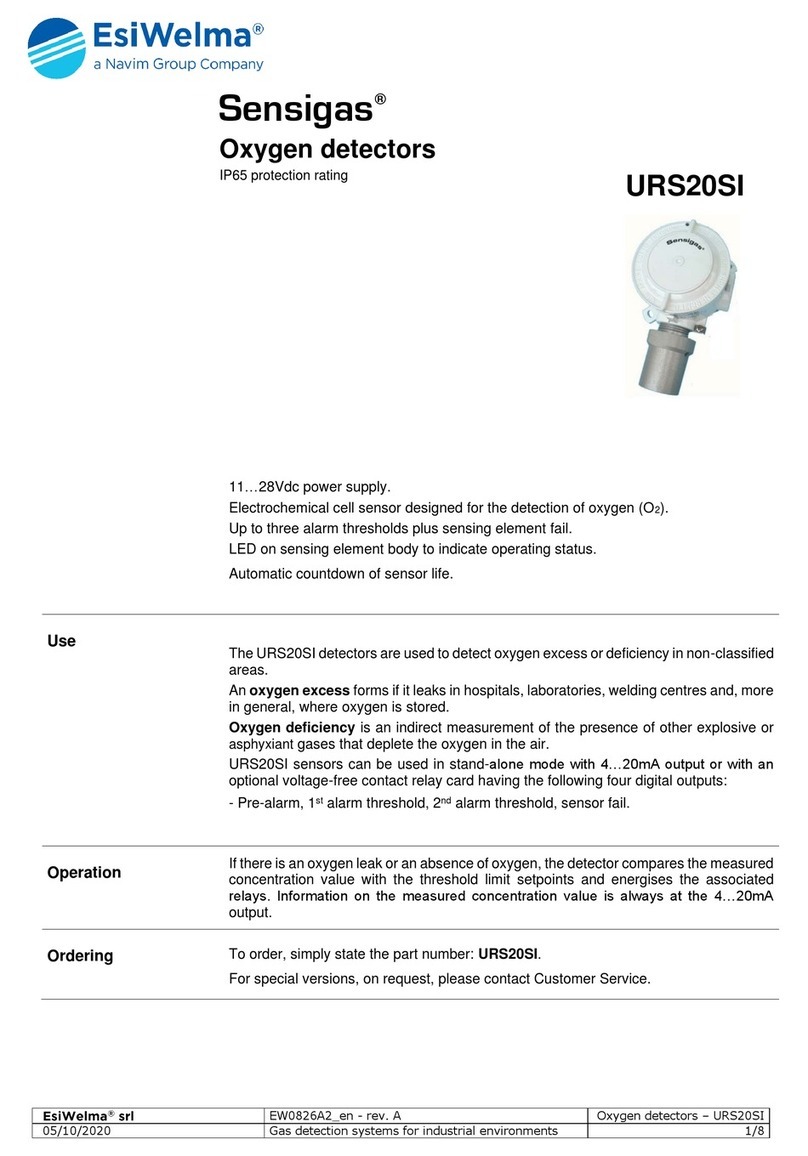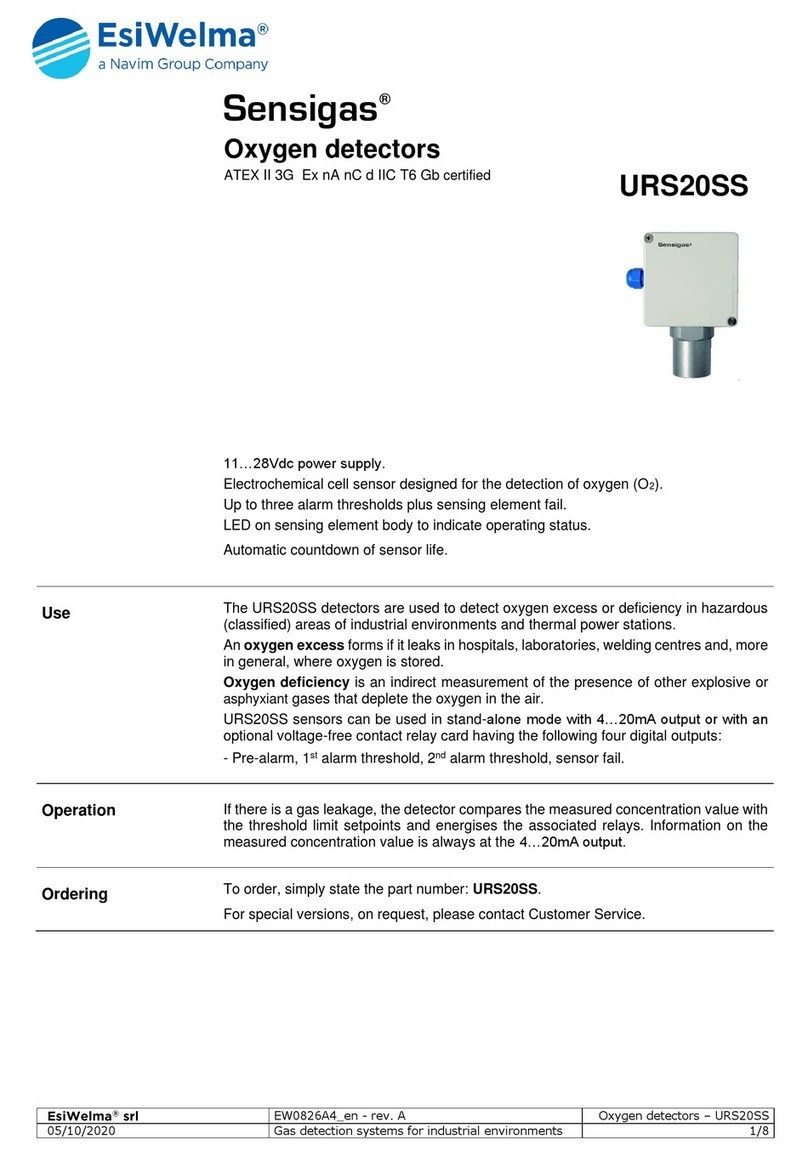___________________________________________________________________________________________
The detector and its sensing element have been designed for ongoing use in areas where there is permanent
occupation by people, so normally pollution-free.
The presence of gases or vapours from some substances such as alcohol, silicon or solvents found in some
detergents or polishes, or from the fumes generated by cooking may cause inappropriate action of the detector
and in the long term could affect the reliability of the device.
The detector needs no periodic maintenance, with the exception of the periodic operational test and its re-
placement 6 years after the date of manufacture indicated on the device.
Do not tamper with the device: danger of electric shock and/or malfunction.
Use a wet cloth and mild detergent to periodically clean the device.
Do not use aggressive detergents like alcohol, ammonia, solvents etc.
Before cleaning the detector, switch off the system power supply to avoid the risk of electric shock.
___________________________________________________________________________________________
Carbon Monoxide (CO) is a colourless, odourless and non-irritating gas that is classified as a chemical asphyxi-
ant whose toxic action is the direct result of hypoxia (oxygen deprivation) caused by exposure to it.
Carbon Monoxide is also rapidly absorbed by the lungs and is spread through the pulmonary alveolus where it
reversibly binds with the haemoglobin as carboxyhaemoglobin (COHb), which is present in the bloodstream in
small quantities. The affinity of haemoglobin for CO exceeds its affinity for oxygen by 200 times.
This reduces the capacity to carry oxygen into the bloodstream and also has the effect of dissociation of the ox-
yhemoglobin that further reduces the supply of oxygen to the tissues.
CO is chemically stable in the body and is eliminated with the air breathed out.
Elimination is regulated by the same factors that determine its absorption.
If the CO level in the air inhaled is constant, the level of COHb in the bloodstream will approach a state of equi-
librium after a few hours.
Still, the speed of that equilibrium depends on a number of factors such as the rate of lung ventilation (physical
activity), the transfer to the pulmonary alveolus, cardiac parameters, concentration of haemoglobin in the blood-
stream, barometric pressure, concentration of oxygen and of carbon dioxide in the breathed air, the individual's
state of health, but the two most important factors are the concentration of CO and the time of exposure to the
gas.
Typical effects of exposure to CO (at concentrations and exposure times over the ones that set off the detector)
are, in growing order of concentration and/or time:
•Slight headache, weakness and, if pregnant, possible effect on foetus
•Strong headache, nausea, loss of movement in hands
•Strong headache, irritability, confusion, loss of vision, muscle weakness, dizziness
•Convulsions and loss of consciousness
•Coma, respiratory arrest, death.
The action of the detector cannot protect individuals in particular risk categories such as people who suffer from
cardiovascular disease, hyperthyroidism, respiratory disease etc
___________________________________________________________________________________________
If an alarm goes off, stay calm, put out flames, switch off the gas or LPG cylinder at the meter, switch off all gas
heating appliances such as gas stoves etc., open doors and windows to increase the flow of fresh air.
If the alarm stops, it is necessary to find out what set it off and take consequent action.
If the alarm continues and the reason for the presence of carbon monoxide cannot be determined or eliminated,
leave the building and contact the gas supply maintenance service of emergency services.
___________________________________________________________________________________________























